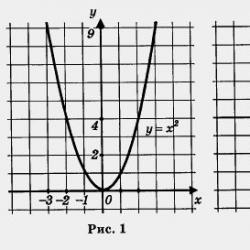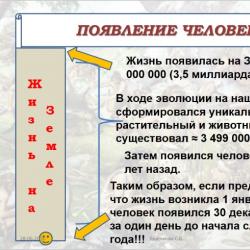In which direction does the earth rotate? What revolves around what? The earth and the sun revolve around what
- Day follows night.
- The earth makes a complete revolution in 23 hours and 57 minutes.
- When viewed from the North Pole, the planet rotates counterclockwise.
- The angle of rotation is 15 degrees per hour and is the same anywhere on the Earth.
- The linear speed of revolutions throughout the planet is not uniform. At the poles, it is equal to zero and increases as it approaches the equator. At the equator, the rotation speed is approximately 1668 km / h.
Important! The speed of movement decreases by 3 milliseconds every year. Experts attribute this fact to the attraction of the moon. Influencing the tides, the satellite, as it were, pulls water towards itself in the opposite direction from the movement of the Earth. A friction effect is created at the bottom of the oceans, and the planet slows down slightly.
The rotation of the planet around the sun
Our planet is the fifth largest and the third farthest from the Sun. It formed from elements of the solar nebula about 4.55 billion years ago. In the process of becoming, the Earth acquired the shape of an irregular ball and established its unique orbit, more than 930 million km long, along which it moves around a large star at an approximate speed of 106,000 km / h. It makes a complete revolution around the Sun in a year, to be more precise, in 365.2565 days. The researchers note that the orbit of a moving planet is not perfectly round, but has the shape of an ellipse. When the average distance to a star is 151 million km, then with a revolution around it, the distance increases to 5.8 million km.Important! Astronomers call the point of the orbit farthest from the Sun Aphelion, and the planet passes it at the end of June. Nearest - Perihelion, and we pass it together with the planet at the end of December.The irregular shape of the orbit also affects the speed at which the Earth moves. In summer, it reaches its minimum and is 29.28 km / s, and having overcome the Aphelion point, the planet begins to accelerate. Having reached a maximum speed of 30.28 km / s at the border of Perihelion, the cosmic body slows down. Such a cycle the Earth goes on indefinitely, and life on the planet depends on the accuracy of observing the trajectory.
Important! When studying the Earth's orbit more closely, astronomers take into account additional equally important factors: the attraction of all celestial bodies in the solar system, the influence of other stars, and the nature of the moon's rotation.

The alternation of the seasons
As it revolves around the Sun, the Earth moves in a direction from west to east. During its journey, this celestial body does not change the angle of inclination, therefore, in a certain part of the orbit, it is completely turned by one side. This period on the planet is perceived by the living world as summer, and winter will reign on the side not turned to the Sun at this time of the year. Due to the constant movement on the planet, the seasons change.Important! Twice a year in both Hemispheres of the planet a relatively identical seasonal state is established. The Earth at this time is turned towards the Sun in such a way that it evenly illuminates its surface. This happens in autumn and spring on the equinoxes.
Leap year
It is known that the planet makes a full rotation around its axis not in 24 hours, as is commonly believed, but in 23 hours and 57 minutes. At the same time, it makes a circle in orbit in 365 days and 6.5 hours. Over time, the missing hours are summed up and thus another day appears. They accumulate every four years and are marked on the calendar on February 29th. A year that has an extra 366th day is called a leap year.Important! The rotation of the Earth is influenced by its satellite - the Moon. Under its gravitational field, the rotation of the planet gradually slows down, which increases the length of the day by 0.001 s with each century.

The distance between our planet and the Sun
During the movement of the Earth around the Sun, a centrifugal force arises between them. It has a contradictory character and pushes the planet away from the star. However, the planet rotates without changing the speed, which is perpendicular to the speed of fall, which deviates its orbit from the direction of the Sun. This feature of the motion of cosmic bodies prevents them from falling into the Sun and moving away from the Solar System. Thus, the Earth moves along a clear trajectory of its orbit. Back in the 16th century, the great Nicolaus Copernicus determined that the Earth is not the center of the Universe, but only revolves around the Sun. Now researchers have made significant progress in knowledge and calculations, but they are not able to influence the trajectory of rotation and the nature of the star itself. Our planet has always been part of the solar system, and life on the planet depends on how far we are from its center and how we move relative to the star. For a better understanding of the topic, also watch the informative video.The fact that the Earth revolves both around its axis and around the Sun, our natural luminary, today there is no doubt among any of the people. This is an absolute and confirmed fact, but why does the Earth spin the way it does? We will look into this issue today.
Why does the earth spin on its axis
Let's start with the very first question, which is the nature of the independent rotation of our planet.
And the answer to this question, as to many other questions about the mysteries of our universe, is the Sun. It is the impact of the Sun's rays on our planet that sets it in motion. If we go a little deeper into this issue, it is worth noting that the sun's rays warm the atmosphere and hydrosphere of the planet, which are set in motion during the heating process. This movement is what makes the earth move.
As for the answer to the question why the Earth rotates counterclockwise, and not along it, there is no actual confirmation of this fact as such. However, it is worth noting that most of the bodies in our solar system rotate exactly in the counterclockwise direction. That is why this condition also affected our planet.
In addition, it is important to understand that the Earth rotates counterclockwise only on the condition that its movement will be observed from the north pole. In the case of observations from the south pole, rotations will occur differently - clockwise.
Why does the earth revolve around the sun
As for the more global issue related to the rotation of our planet around its natural star, we considered it in as much detail as possible in the framework of the corresponding article on our website. However, in short, the reason for such a rotation is the law of universal gravitation, which operates in the Cosmos as it does on Earth. And it lies in the fact that bodies with a larger mass attract less "weighty" bodies to themselves. Thus, the Earth is attracted to the Sun and rotates around the star due to its mass, as well as acceleration, moving strictly along the existing orbit.

Why does the moon revolve around the earth
We have also already considered the nature of the rotations of the natural satellite of our planet, and the reason for such a movement is of a similar nature - the law of universal gravitation. The Earth, of course, has a more serious mass than the Moon. Accordingly, the Moon is attracted to the Earth and moves along its orbit.
Our planet is always in motion. The rotation of the Earth occurs simultaneously around the central point of the solar system and around its own axis.
Earth's axis and its tilt
The earth's axis is understood as a conditional straight line passing through the center and both geographic poles of the planet.
It is not vertical - it is tilted at an angle of 66 ° 33', and this explains the change of seasons:
- at the position of the Sun at 23°27´ s. sh. (above the Northern Tropic) the northern hemisphere receives maximum heat and light, during this period summer begins here;
- six months later, the Sun rises already over another tropic - the South, located at 23 ° 27' S. sh., now the southern hemisphere receives more light and heat, and winter begins in the northern.
If the earth's axis were always vertical, the planet would not know the seasonality phenomenon: on the half illuminated by the Sun, all points would receive the same amount of heat and light.
On the angle of inclination of the axis not affected by any external or internal factor, including the attraction of the Sun, moon or other planets, but the axis itself performs precession - moving along a circular conical trajectory.
Today, the geographic North Pole of the Earth looks at the North Star, but after 12 thousand years, the axis will turn in the opposite direction.
The pole will point to the star Vega in the constellation Lyra. After 25.8 thousand years, he will return to the North Star again.
In addition, the earth's axis drifts a little in the region of the poles due to the fact that the Earth rotates, slightly oscillating, moving east or west at a speed of up to 10-15 cm / year, this is explained by climatic changes occurring up to 45 ° N. sh. and south latitude: ice melting in Antarctica and Greenland, water losses in Eurasia, excessively dry or wet years in Australia.
Rotation of the Earth around its axis
One such revolution of the Earth is called a day and lasts 24 hours, more precisely - 23 hours 56 minutes and a few seconds. The planet moves from west to east. This phenomenon explains the change of day and night: the day is observed on that half of the globe, which is illuminated by the Sun, and the night is observed on the shadow side.
Due to this rotation, there is a deviation of any moving flows of matter (water in rivers, air in winds) from lines parallel to the equator: in the south to the left, and in the north - in the opposite direction. Whirlpools also move in different ways - from natural circular waterfalls to water in the drain of a home washbasin. In the northern part of the planet, water in funnels spins clockwise, in the southern hemisphere - in the opposite direction.
The linear speed of such a movement of the planet at the equator is 465 m/s (1674 km/h).
With increasing latitude to the north and south, the speed indicators gradually become lower, for example, at 55 ° N.L. (the latitude of Moscow) they are already almost 2 times smaller and equal to 260 m/s.
At the South and North Poles, the linear velocity reaches 0 m/s. The angular velocity of the planet's rotation at any of its points is the same - 15 ° per hour.
Scientists have discovered five-year cycles of acceleration and deceleration in the rotation of the Earth around its axis, and each last "slow" year is most often accompanied by a surge in the number of earthquakes around the world. A direct causal relationship has not yet been identified, but such cycles can become a tool for predicting the growth of seismic activity.
Rotation of the Earth around the Sun
The revolution of the planet with respect to the central point of our system occurs in an elliptical orbit at an average distance from the center of the system of almost 149.6 million km with an average orbital velocity of approximately 29.8 km/s.
The speed value changes depending on the location of our planet in outer space: being at the point closest to the Sun (it is called perihelion), this celestial body moves faster - more than 30 km / s, in aphelion (the position furthest from the star) - more slowly, about 29.3 km/s.
While the Earth makes a complete revolution around the Sun, it manages to make approximately 365.25 of its own revolution. How many days are included in 1 astronomical year.
It differs from the calendar, in which a period of time of exactly 24 hours is taken per day and which lasts 365 days. Every fourth year, an additional 366 days are added to the calendar.
In which direction does the earth rotate
If you look at the solar system "from above", i.e. so that the land plots located near the North Pole are exactly opposite our view, then the rotation will be counterclockwise
Why can't we feel her movements
A person cannot feel the rotation of the planet, because along with him all the objects on its surface move in parallel, in the same direction and at the same speed. An example is sailing on a ship. Being on its deck, we do not notice that the surrounding objects are floating along the pond with us. Relative to ourselves, they remain motionless.
What if she stops
If the Earth stops rotating on its axis, then:
- one side of it will be constantly turned towards the center of the solar system, the luminary will heat the soil to the highest temperatures, and all moisture from the surface will evaporate;
- the second side of the planet will plunge into eternal night, frost will constantly rage here, the water will turn into a thick layer of ice, and its thickness will reach kilometers;
- conditions will become extremely difficult for the emergence and development of any forms of life, incl. for the continued existence of mankind.
The Earth's day will last a whole year, the length of the day will be 6 months, and after an insignificant period of twilight, a six-month night will come on the planet. Sunset and sunrise will be determined solely by the rotation of the planet around the star - it will rise in the west and set in the east.
Since the linear rotational speed reaches significant values, with a sudden stop of the planet, all buildings, plants, animals and people will be demolished from the surface by inertia forces.
The only exceptions are structures embedded in the earth's firmament or rocks. By inertia, the oceans will continue to rotate, causing a giant tsunami.
Today, under the influence of centrifugal forces, the Earth is somewhat flattened at the poles and has a kind of "hump" in the equator. After it stops, it will disappear, all the water of the oceans will drain to the south and north, exposing the bottom in the equatorial region up to 30 ° north latitude. and S.. So on the planet one giant continent encircling it and two polar "water caps" are formed.
The Earth's magnetic field will also disappear, leaving us without protection from the solar and cosmic winds - charged particles dangerous for all living things that will fall on the planet. The loss of the magnetic field will lead to the disappearance of the auroras.
All the described consequences are also valid for the situation if the Earth's movement around the Sun stops, only they will be even more catastrophic. There will no longer be a change in the time of day, eternal night will be established on one half of the planet, and the same eternal day on the other.
The earth does not stand still, but is in constant motion. Due to the fact that it revolves around the Sun, the planet undergoes a change of seasons. However, not everyone remembers that, flying around the heavenly body, the Earth still has time to spin around its own axis. It is this movement that causes the change of day and night outside the window and is called diurnal.
To understand how and with what speed the Earth rotates around the Sun and its axis, AiF.ru helped astrophysicist, employee of the Moscow Planetarium Alexander Perkhnyak.
The movement of the earth around its axis
How does the earth rotate on its axis?
During the rotation of the Earth around its axis, only two points remain motionless: the North and South Poles. If you connect them with an imaginary line, you get the axis around which the Earth rotates. The earth's axis is not perpendicular, but is at an angle of 23.5 ° to the earth's orbit.
At what speed does the earth rotate on its axis?
The earth rotates around its axis at a speed of 465 m/s, or 1,674 km/h. The farther from the equator, the slower the planet's movement.
“Few people know that at a distance from the equator, the speed of rotation of the Earth becomes less. Visually it looks like this. The city of Quito is located near the equator line, which means that it and its inhabitants imperceptibly make a turn together with the Earth at a speed of 465 m/s. But the rotation speed of Muscovites living much north of the equator will be almost two times less: 260 m/s,” said Perkhnyak.
In which direction does the earth rotate?
The rotation of the Earth around its axis occurs from west to east. If you look at the Earth from above in the direction of the North Pole, then it will rotate counterclockwise.
Does the speed of the Earth's movement around its axis change?
Yes, it's changing. Every year, the Earth's course slows down by an average of 4 milliseconds.
“Astrophysicists attribute this phenomenon to the lunar attraction, which is known to affect the tides on our planet. So, when they occur, the Moon, as it were, tries to attract water to itself, moving it in the direction opposite to the course of the Earth. Due to this peculiar counteraction, an insignificant friction force arises at the bottom of the reservoirs, which, in accordance with the laws of physics, slows down the speed of the Earth. Slightly, only 4 milliseconds per year, ”Perkhnyak specified.
Movement of the Earth around the Sun
How does the earth revolve around the sun?
Our planet revolves around the Sun in an orbit with a length of more than 930 million km.
At what speed?
The Earth revolves around the Sun at a speed of 30 km / s, that is, 107,218 km / h.
How long does it take the earth to complete one revolution around the sun?
The Earth makes one complete revolution around the Sun in about 365 days. The time it takes for the Earth to completely revolve around the Sun is called a year.
In which direction does the Earth move when it circles around the Sun?
Around the Sun, the Earth rotates from west to east, as well as around its axis.
How far does the earth revolve around the sun?
The Earth revolves around the Sun at a distance of about 150 million km.
How do the seasons change?
During the rotation of the Earth around the Sun, its angle of inclination does not change. As a result, on one part of its trajectory, the Earth will be turned more towards the Sun by its lower half: the Southern Hemisphere, where summer comes. And at this time, the North Pole will be practically hidden from the sun: it means that winter is coming there. Twice a year, the Sun illuminates the Northern and Southern hemispheres approximately equally: this is the time of spring and autumn. These moments are also known as the spring and autumn equinoxes.
Why doesn't the Earth fall into the Sun?
“When the Earth revolves around the Sun, a centrifugal force is generated that tries to constantly push our planet away. But she won't be able to. And all because the Earth always moves around the star at the same speed and is at a safe distance from it, correlated with the centrifugal force with which they are trying to knock the Earth out of orbit. That is why the Earth does not fall on the Sun and does not fly away into space, but continues to move along a given trajectory,” said Alexander Perkhnyak.
The earth rotates around an inclined axis from west to east. Half of the globe is illuminated by the sun, it is day there at this time, the other half is in the shade, there is night. Due to the rotation of the Earth, there is a change of day and night. The Earth makes one revolution around its axis in 24 hours - a day.
Due to rotation, moving streams (rivers, winds) in the northern hemisphere are deflected to the right, and in the southern hemisphere - to the left.
Rotation of the Earth around the Sun
The Earth revolves around the sun in a circular orbit, a complete revolution takes 1 year. The Earth's axis is not vertical, it is inclined at an angle of 66.5° to the orbit, this angle remains constant during the entire rotation. The main consequence of this rotation is the change of seasons.
Consider the rotation of the Earth around the Sun.

- December 22- winter solstice. Closest to the sun (the sun is at its zenith) at this moment is the southern tropic - therefore, summer is in the southern hemisphere, winter is in the northern hemisphere. The nights in the southern hemisphere are short, at the southern polar circle on December 22 the day lasts 24 hours, the night does not come. In the Northern Hemisphere, the opposite is true; in the Arctic Circle, the night lasts 24 hours.
- 22nd of June- the day of the summer solstice. The northern tropic is closest to the sun, in the northern hemisphere it is summer, in the southern hemisphere it is winter. In the southern polar circle, night lasts 24 hours, and in the northern polar circle, night does not come at all.
- March 21, September 23- the days of the spring and autumn equinoxes. The equator is closest to the sun, the day is equal to the night in both hemispheres.






